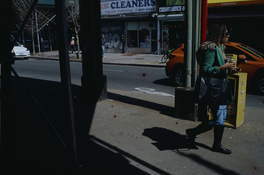MingMingPhoto
Member
hello everyone.
I've been using the tetenal e6 chemicals for a while and have had excellent results. I've never done the full 6 step e6 process but since tetenal has stopped producing the e6 I've had no choice but to purchase the belini. I'm going to run a small PERSONAL experiment to see if I can even tell the difference between the 6 step and 3 steo processes. If thye are the same I'm going to try to consolidate the belini working solutions so they can fit in my machine (filmomat only has three chemical resivuars).
would anyone be able to tell me if they know which chemicals can be combined to make the kit a three step process? I'm running under the assumption that it can be done. also a data sheet on the life of the chemicals would be nice if anyone has
I've been using the tetenal e6 chemicals for a while and have had excellent results. I've never done the full 6 step e6 process but since tetenal has stopped producing the e6 I've had no choice but to purchase the belini. I'm going to run a small PERSONAL experiment to see if I can even tell the difference between the 6 step and 3 steo processes. If thye are the same I'm going to try to consolidate the belini working solutions so they can fit in my machine (filmomat only has three chemical resivuars).
would anyone be able to tell me if they know which chemicals can be combined to make the kit a three step process? I'm running under the assumption that it can be done. also a data sheet on the life of the chemicals would be nice if anyone has














